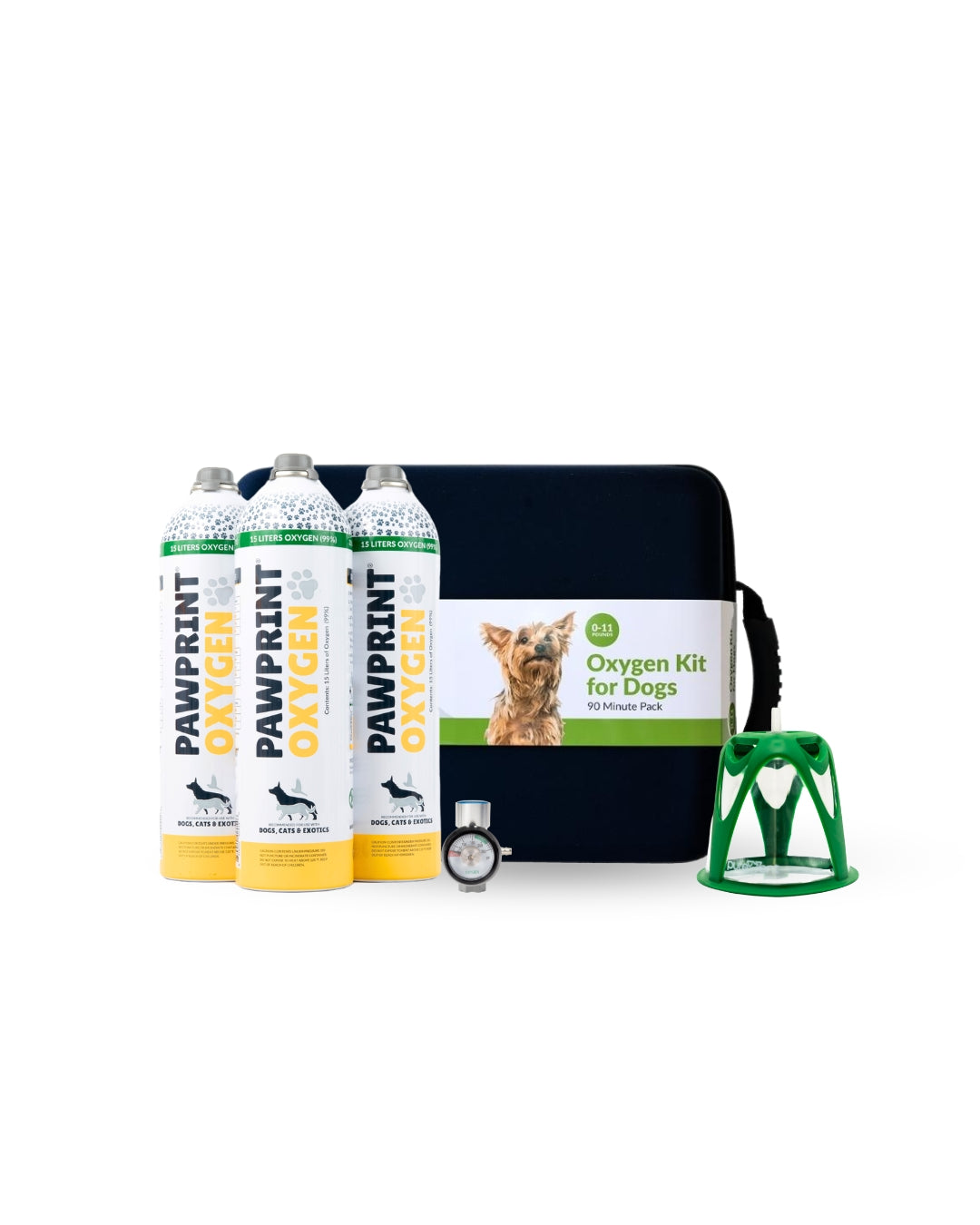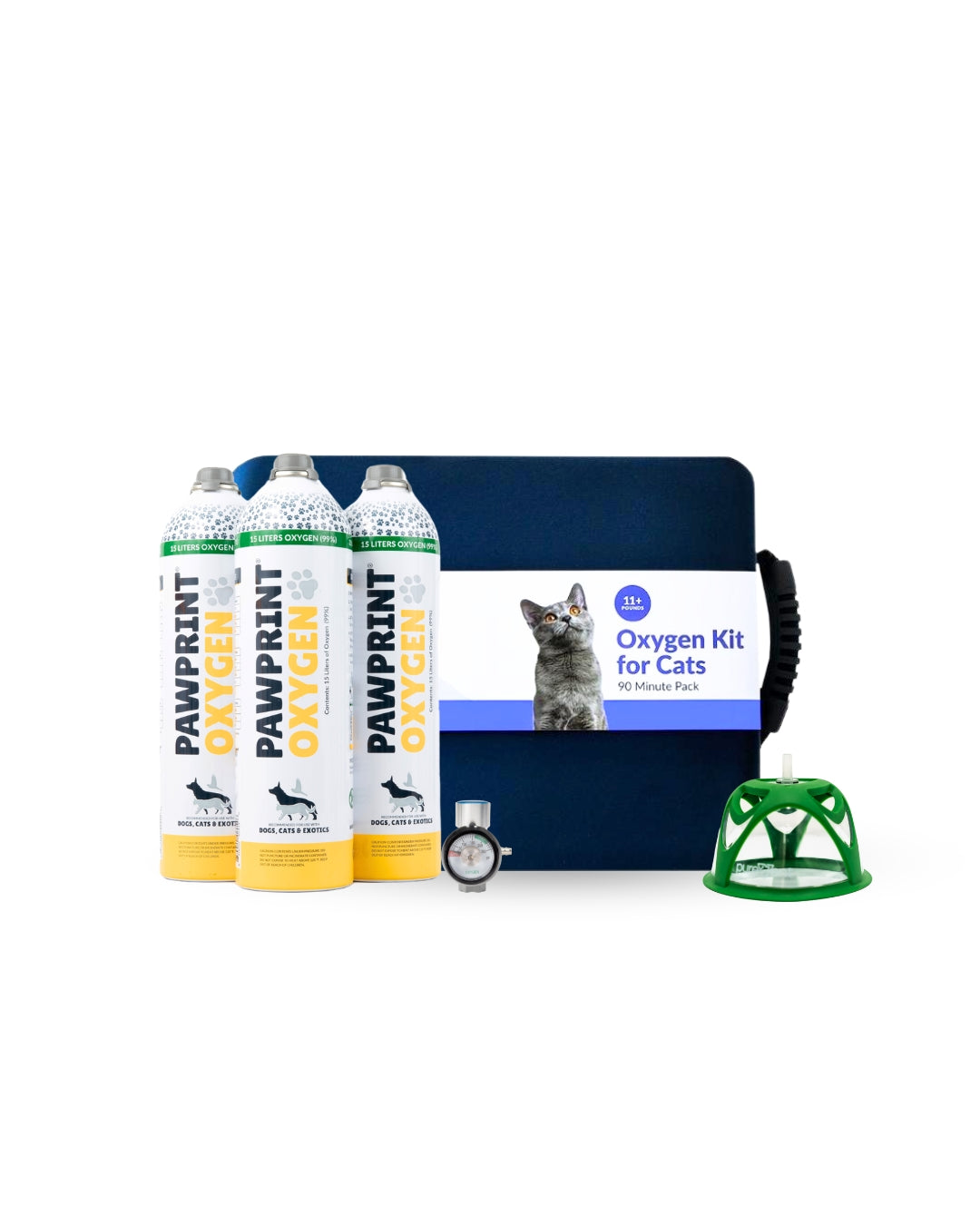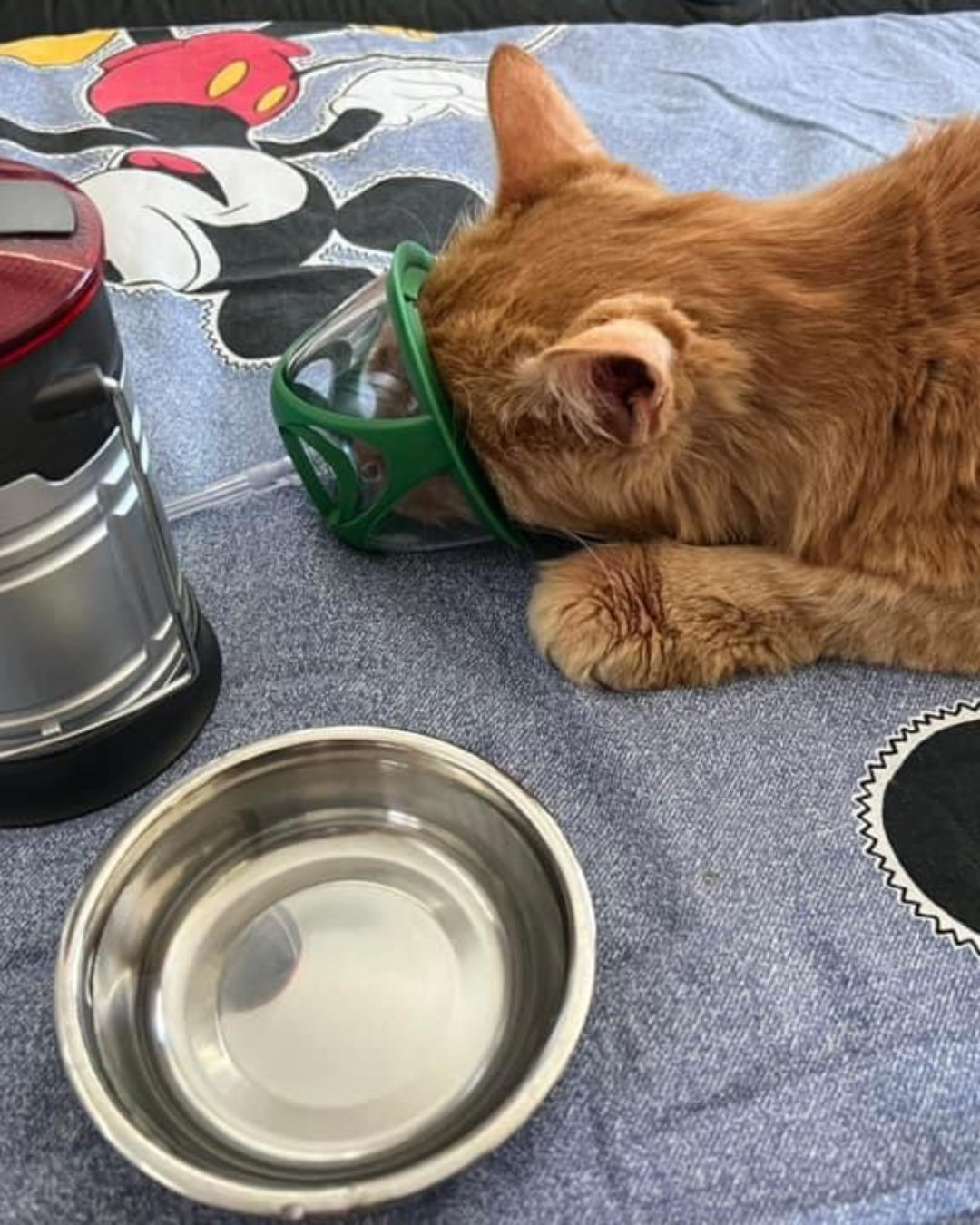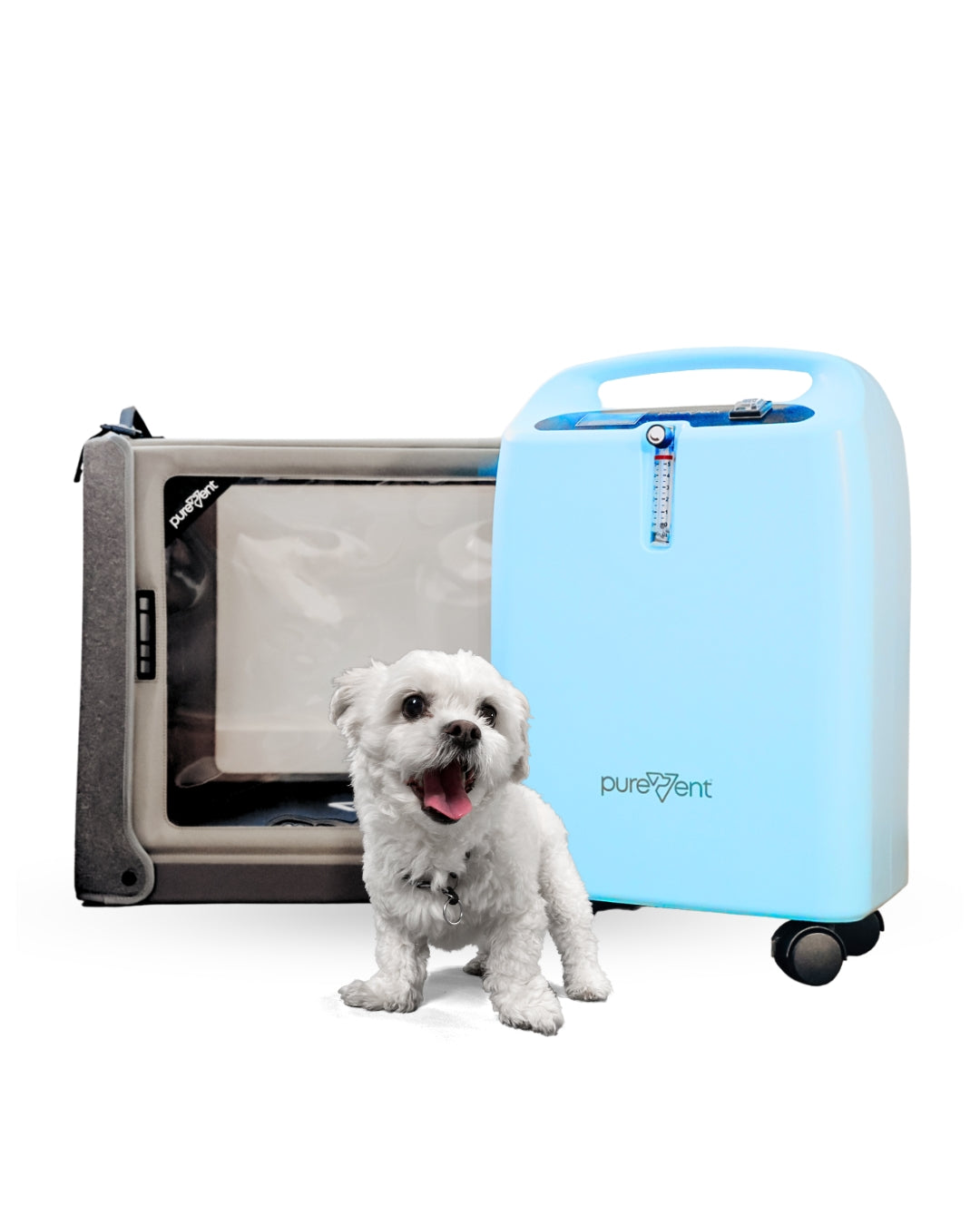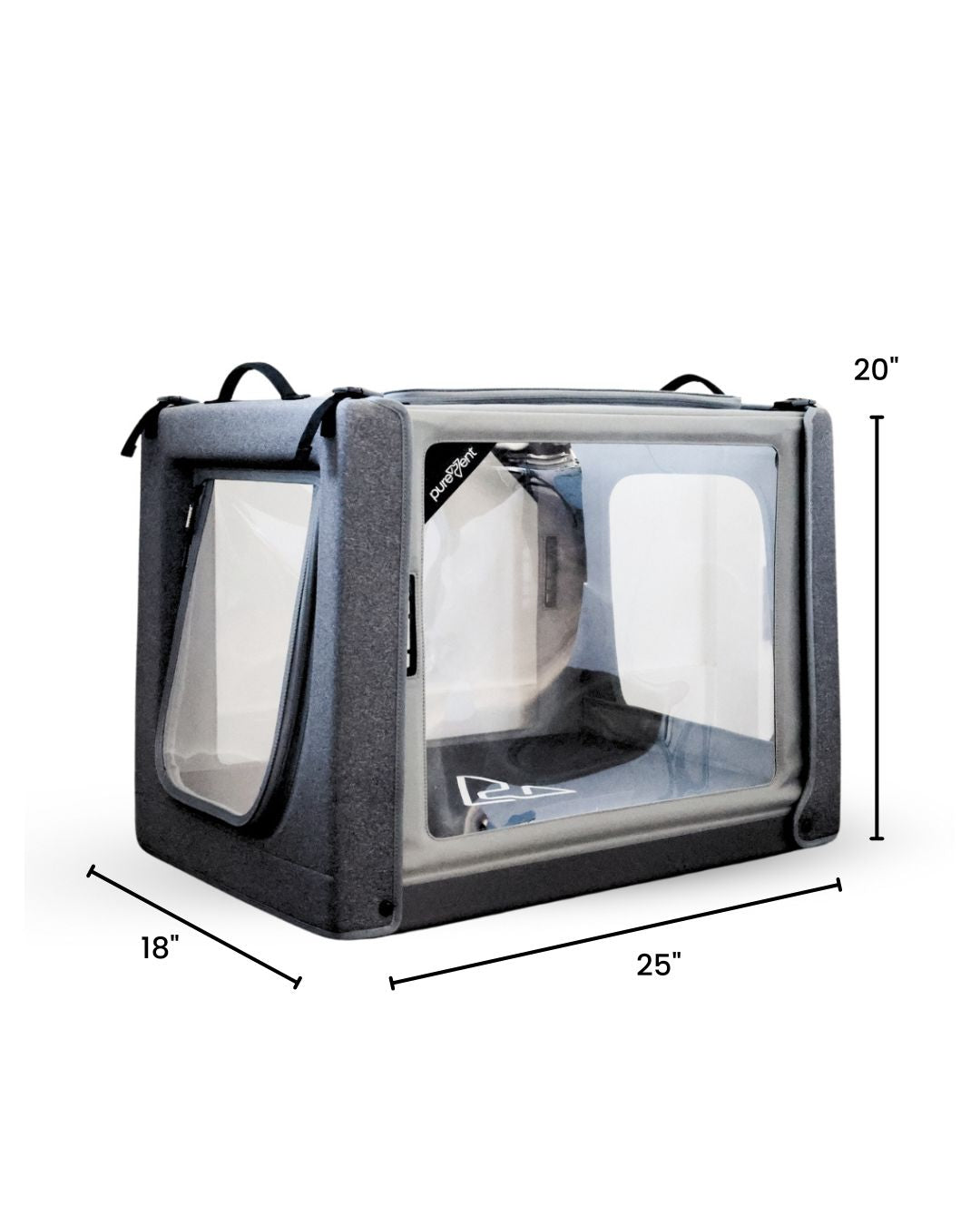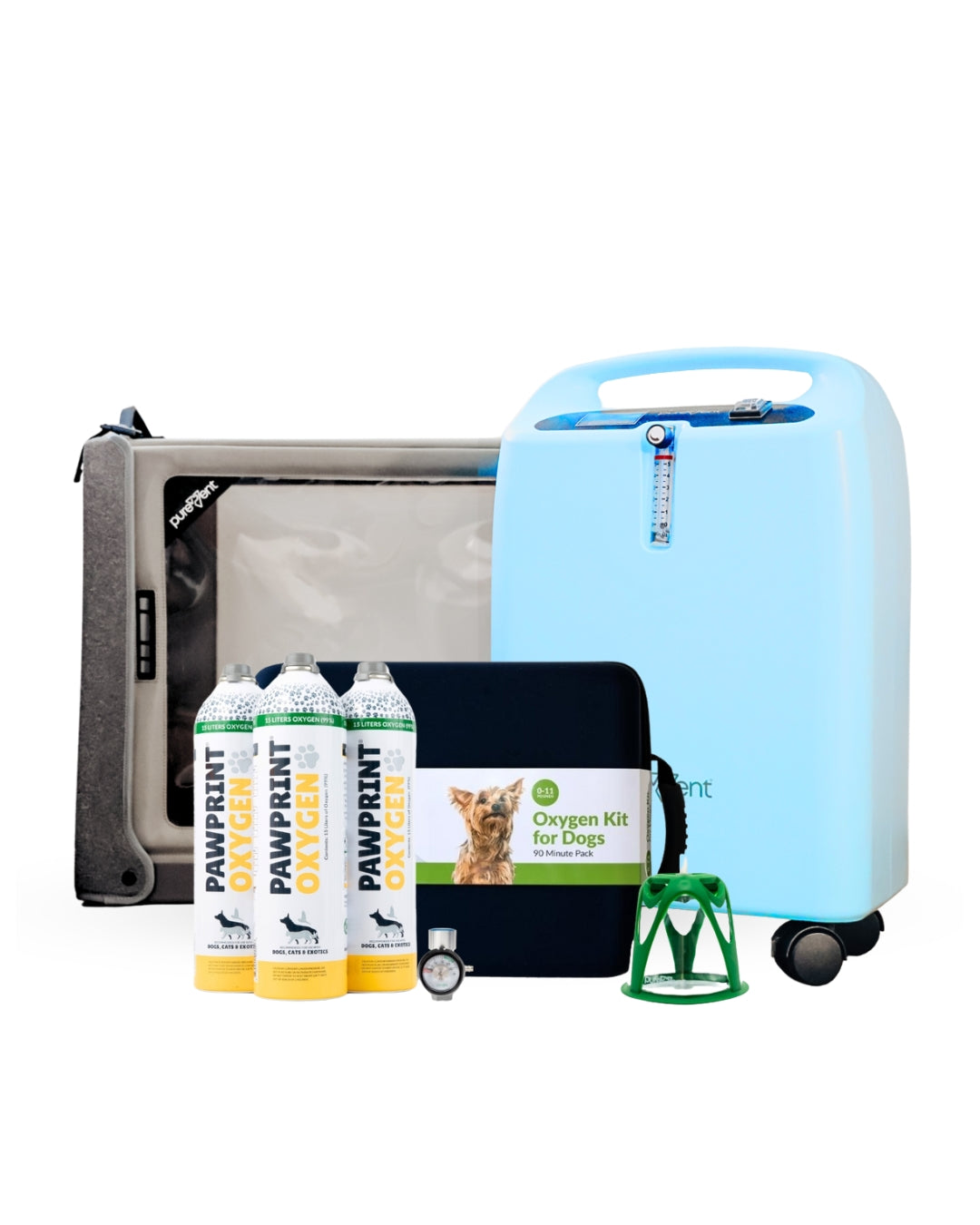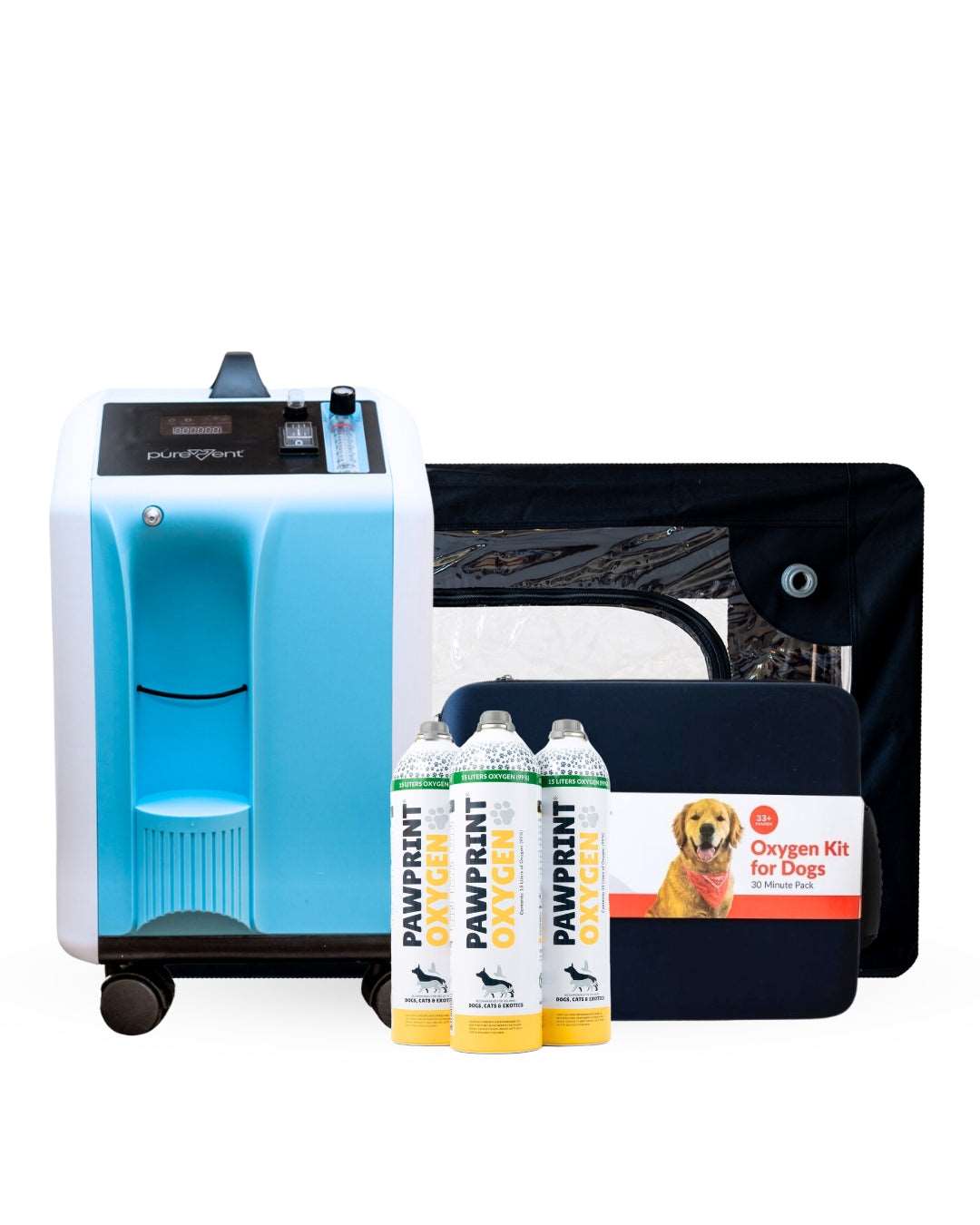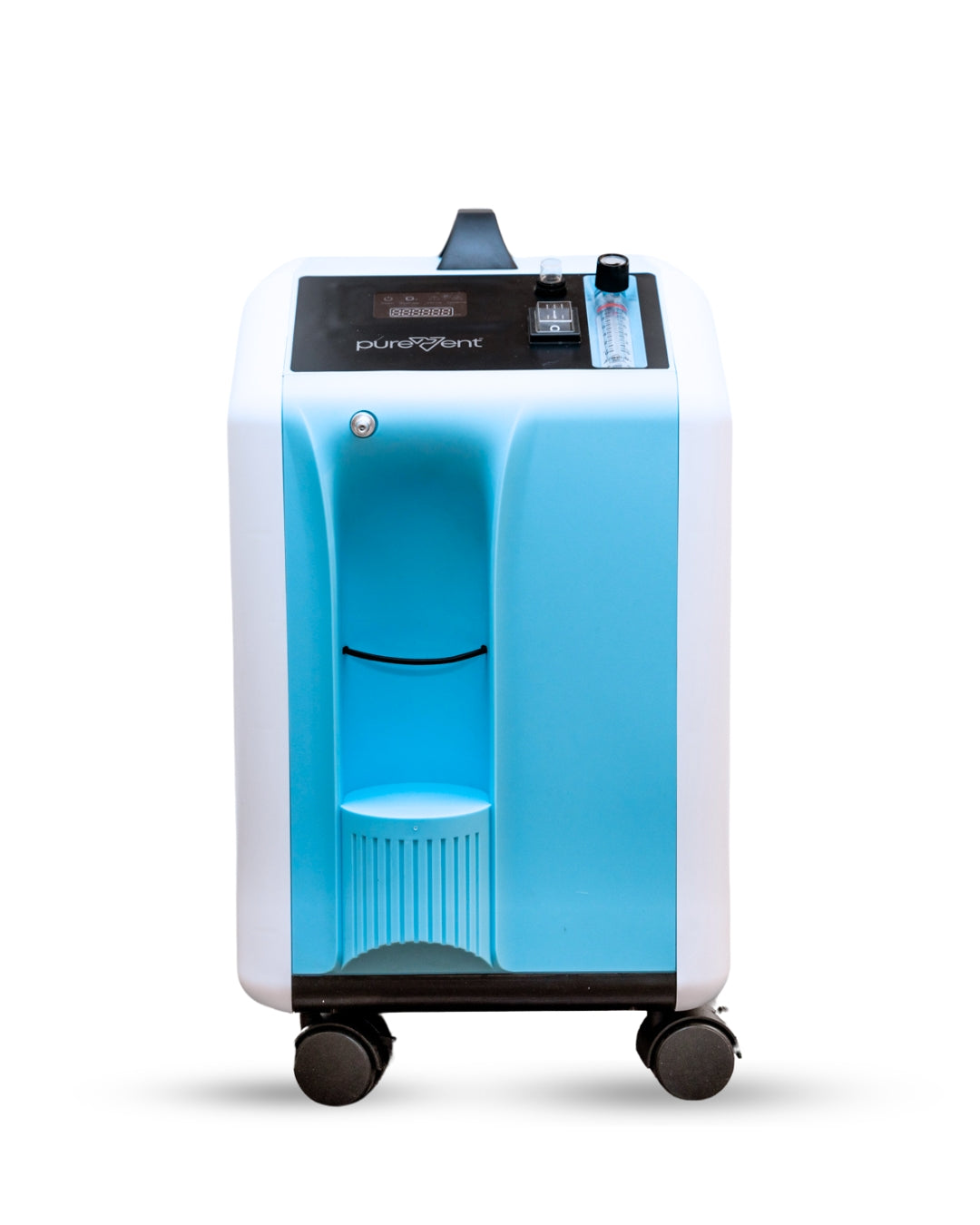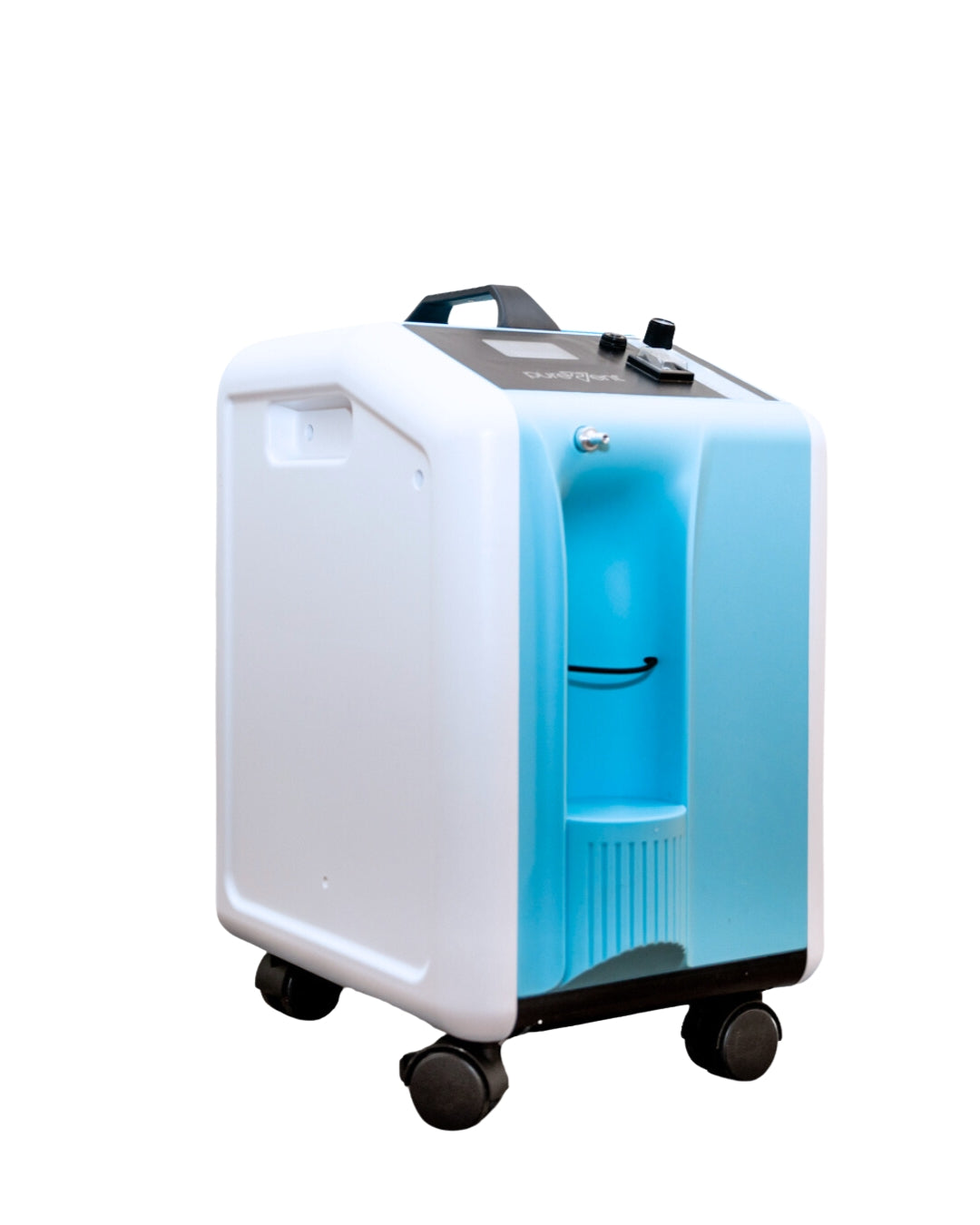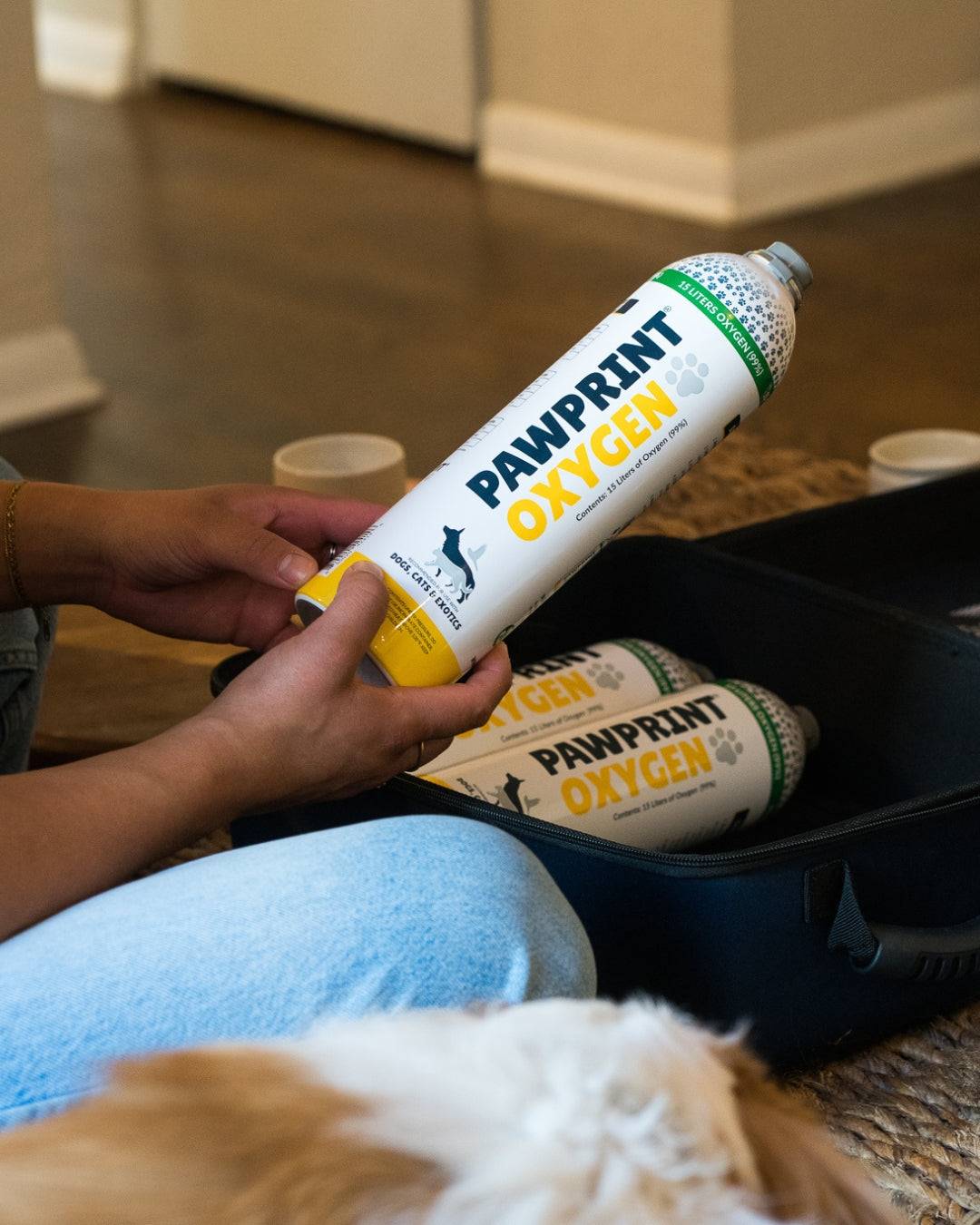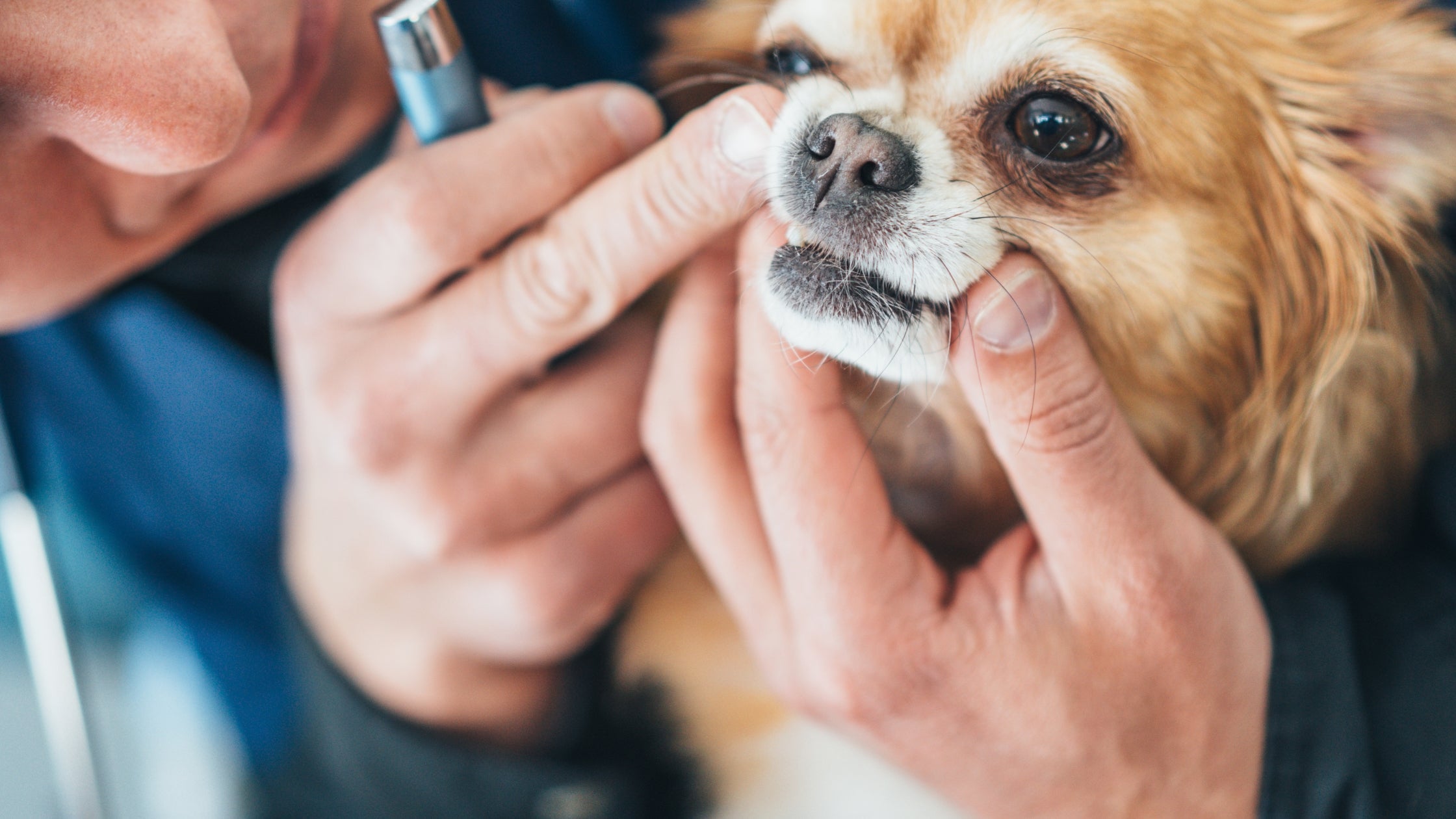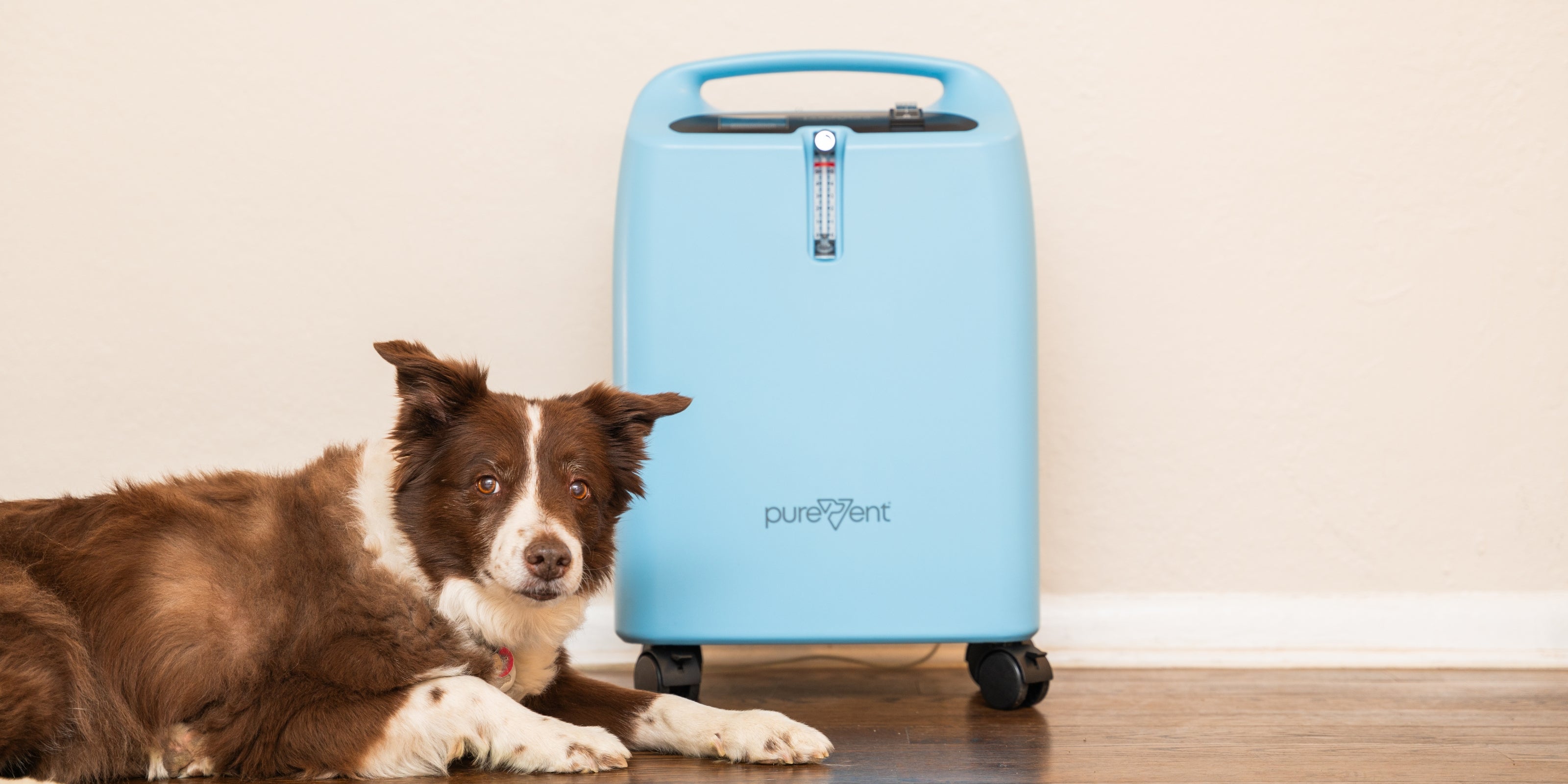Traveling to high-altitude destinations can be an exhilarating experience, offering breathtaking views and unique adventures. However, it's essential to consider how these environments can affect our furry companions. Just like us, pets can experience significant physiological changes at higher altitudes, which can impact their health and well-being.
Understanding how high altitude affects pets is crucial for responsible pet ownership and travel planning. Recognizing the signs of altitude sickness, taking preventive measures, and knowing when to seek help can ensure that your pet stays safe and comfortable during high-altitude adventures. This guide will explore the effects of high altitude on pets, symptoms to watch for, preventive strategies, and the role of supplemental oxygen in managing altitude sickness.
Understanding High Altitude and Its Effects On Dogs
When venturing into high-altitude regions, it's essential to be aware of the unique environmental conditions that can affect both humans and their pets. Having an idea of what constitutes high altitude and what the physiological changes are that may affect your pet will help you stay prepared for travel through high altitudes.
What Constitutes High Altitude?
High altitude is generally defined as elevations above 5,000 feet (1,500 meters) above sea level. These regions are characterized by thinner air, reduced oxygen levels, and often more extreme weather conditions. In the United States, notable high-altitude areas include:
-
The Rocky Mountains :
Stretching from Canada through the central United States, many parts of this mountain range exceed 10,000 feet.
-
The Sierra Nevada :
Located in California and Nevada, with famous peaks like Mount Whitney reaching over 14,000 feet.
-
The Colorado Plateau :
Spanning across Utah, Colorado, Arizona, and New Mexico, this region has significant high-altitude areas like the Grand Canyon.
-
The Appalachian Mountains :
Although not as high as the Rockies or Sierras, certain areas like the Great Smoky Mountains have elevations around 6,000 feet.
Understanding these high-altitude regions is important for pet owners who live in or travel to these areas, as the environment can significantly impact their pets’ health.
Dog Oxygen Rescue Kit
Our Oxygen Rescue Kits are designed to help your dog exactly when they need it. You can administer on-the-spot oxygen or oxygen in transport while on your way to emergency care. Dogs needing this rescue kit would likely suffer from more acute health conditions like seizures or be in a high-risk category that you'd like to keep a kit on hand to transport them with.
Physiological Changes for Pets at High Altitude
Understanding these physiological changes is crucial for pet owners to ensure their furry friends remain healthy and comfortable at high altitudes.
-
Decreased Oxygen Levels
At higher altitudes, the air is thinner, meaning there are fewer oxygen molecules per breath. This can make it more difficult for pets to get the oxygen they need, leading to symptoms such as increased breathing rate and fatigue. Pets with preexisting respiratory or cardiovascular conditions may struggle even more with lower oxygen availability.
-
Temperature Fluctuations
High-altitude regions often experience more significant temperature variations between day and night. These fluctuations can be challenging for pets, especially those not acclimated to colder temperatures. Pets may require additional insulation, such as blankets or pet jackets, to stay warm, especially during nighttime or winter months.
-
Increased UV Exposure
Higher altitudes have less atmospheric protection against ultraviolet (UV) radiation from the sun. This increased UV exposure can affect pets, leading to potential skin damage or sunburn, particularly in animals with thin or light-colored fur. Protecting pets with sunscreen formulated for animals or providing shaded areas can help mitigate these effects.
Symptoms of Altitude Sickness in Pets
Just like humans, pets can experience altitude sickness when exposed to high elevations, and recognizing the symptoms early is vital to ensure their well-being.
Altitude sickness in pets can manifest in various ways, from increased respiratory rates and panting to lethargy, vomiting, and decreased appetite. Understanding these signs is crucial for pet owners, especially when traveling to or living in high-altitude areas. By being vigilant and knowledgeable about the symptoms of altitude sickness, you can take prompt action to alleviate your pet's discomfort and prevent more severe health issues. This section will guide you through the common symptoms of altitude sickness in pets and recognizing their severity.
Common Symptoms of Altitude Sickness in Pets
Pets, much like humans, can experience altitude sickness when exposed to high elevations. It's important for pet owners to be aware of the signs and symptoms so they can take prompt action if their pets begin to suffer. The common symptoms of altitude sickness in pets include:
-
Increased Respiratory Rate and Panting :
One of the first signs that a pet is struggling with high altitude is an increased breathing rate. Pets may pant excessively as they try to take in more oxygen.
-
Lethargy and Decreased Activity :
Pets suffering from altitude sickness often become lethargic. They may seem unusually tired, less playful, and may spend more time resting.
-
Vomiting and Nausea :
Nausea is a common symptom of altitude sickness. Pets may vomit or refuse food due to an upset stomach.
-
Coughing and Difficulty Breathing : The decreased oxygen levels at high altitudes can lead to respiratory distress. Pets might develop a persistent cough or show signs of labored breathing.
-
Changes in Appetite :
A noticeable decrease in appetite can be a sign of altitude sickness. Pets might eat less or show no interest in their food.
The Severity of Symptoms of Altitude Sickness in Pets
The severity of altitude sickness in pets can vary from mild to severe, and recognizing the level of severity is crucial for determining the appropriate response:
-
Mild Symptoms :
These include slight increases in respiratory rate and minor lethargy. Pets with mild symptoms may still be somewhat active but will tire more easily than usual. Monitoring and ensuring proper hydration can often help manage these mild cases.
-
Moderate Symptoms :
Pets with moderate altitude sickness may show more pronounced signs such as significant lethargy, noticeable difficulty breathing, and intermittent vomiting. These symptoms require closer attention and might benefit from supplemental oxygen or a descent to a lower altitude.
-
Severe Symptoms :
Severe altitude sickness is characterized by persistent vomiting, extreme lethargy, severe respiratory distress, and complete loss of appetite. Pets showing these symptoms need immediate veterinary care. Descending to a lower altitude and providing supplemental oxygen can be lifesaving.
By understanding and recognizing these symptoms, pet owners can take swift and appropriate actions to ensure their pets' safety and well-being at high altitudes.
Breeds and Pets Most Affected By Altitude Sickness
Not all pets are equally affected by high altitudes. Certain breeds and pets with specific health conditions are more susceptible to the physiological challenges posed by high elevations. Understanding which pets are at higher risk can help pet owners take the necessary precautions to ensure their furry friends remain safe and comfortable.
This section will explore the breeds that are most affected by high altitude, such as brachycephalic breeds, and discuss the increased risks faced by older pets and those with preexisting health conditions. By being aware of these factors, pet owners can better prepare and protect their pets during high-altitude travels or relocations.
Brachycephalic Breeds
Brachycephalic breeds, known for their short noses and flat faces, are particularly susceptible to the effects of high altitude. Examples of these breeds include Bulldogs, Pugs, Boxers, Shih Tzus, and Persian cats. The anatomical structure of these breeds makes it more challenging for them to breathe under normal conditions, and the reduced oxygen levels at high altitudes exacerbate these difficulties.
The shortened airways and narrower nostrils of brachycephalic breeds result in less efficient breathing. At high altitudes, where oxygen levels are lower, these pets struggle even more to get enough air. They may exhibit rapid breathing, increased panting, and signs of distress more quickly than other breeds.
Older Pets and Pets with Preexisting Conditions
Older pets and those with preexisting health conditions are also at higher risk when exposed to high altitudes. These animals often have diminished physiological reserves and may find it harder to cope with the stresses associated with altitude changes.
-
Increased Risks and Necessary Precautions
- Older pets generally have less robust cardiovascular and respiratory systems, making it harder for them to adjust to decreased oxygen levels.
- Pets with chronic conditions need careful monitoring and possibly preventive treatment before exposure to high altitudes.
- Pre-travel veterinary checkups are essential to assess their health and readiness for high altitude environments.
-
Common Heart and Lung Conditions in Pets that May Worsen at High Altitudes
- Heart Conditions : Pets with heart disease, such as congestive heart failure or cardiomyopathy, are at increased risk. The heart must work harder to pump oxygenated blood through the body, which can lead to exacerbation of symptoms like fatigue, coughing, and difficulty breathing.
- Lung Conditions : Pets with respiratory diseases like asthma, bronchitis, pulmonary hypertension, or chronic obstructive pulmonary disease (COPD) may find it particularly challenging to breathe at high altitudes. The reduced oxygen can lead to more frequent and severe respiratory distress episodes.
For these vulnerable pets, it is crucial to take extra precautions. These include gradual acclimatization, ensuring they stay well-hydrated, monitoring them closely for signs of altitude sickness, and having a plan in place for emergency veterinary care if needed.
Understanding which pets are most at risk and taking appropriate measures can significantly reduce the potential adverse effects of high altitude on their health. This proactive approach ensures that all pets, regardless of breed, age, or health condition, can safely enjoy high-altitude environments.

Preventative Measures for High Altitude Travel With Your Pet
Ensuring your pet's safety and comfort at high altitudes involves taking proactive steps to prevent altitude sickness. Here are some key preventative measures to consider before embarking on your high-altitude adventure:
Gradual Acclimatization
-
Steps to Acclimate Pets to Higher Altitudes
-
Gradual Ascent : Slowly increase your pet's altitude over several days to allow their bodies to adjust. Avoid rapid ascents, especially if coming from sea level.
-
Short Stays at Intermediate Altitudes : If possible, spend a few days at an intermediate altitude before reaching your final high-altitude destination. This step-by-step approach can significantly reduce the risk of altitude sickness.
- Limit Physical Activity : During the acclimatization period, limit your pet's physical activity to prevent overexertion.
-
Gradual Ascent : Slowly increase your pet's altitude over several days to allow their bodies to adjust. Avoid rapid ascents, especially if coming from sea level.
Maintaining Hydration
Importance of Water and Hydration Tips
-
Provide Ample Fresh Water : Ensure that your pet has constant access to fresh water. Pets can become dehydrated more quickly at high altitudes due to increased respiratory rates.
-
Monitor Water Intake : Keep an eye on how much water your pet is drinking. Encourage them to drink regularly, especially if you notice signs of dehydration such as dry gums or lethargy.
-
Use Portable Water Bowls : When traveling, carry portable water bowls to make it easy for your pet to drink during hikes or outdoor activities.
Monitoring and Recognizing Symptoms Early
How to Observe and Identify Early Signs of Altitude Sickness
-
Regular Checks : Frequently check your pet's breathing, activity level, and overall demeanor. Be alert to changes that could indicate altitude sickness.
-
Behavioral Changes : Watch for signs of increased panting, lethargy, vomiting, or changes in appetite. Early detection of these symptoms can prevent more severe health issues.
-
Use of Pulse Oximeters : Consider using a pet-friendly pulse oximeter to monitor your pet's oxygen levels, especially if they are prone to respiratory issues.
Pre-Travel Veterinary Checkups
Importance of Consulting a Veterinarian Before Traveling
-
Health Assessment : Schedule a visit to your veterinarian before traveling to high altitudes. The vet can assess your pet's overall health and provide specific recommendations based on their condition.
-
Discuss Preexisting Conditions : Inform the vet about any preexisting health conditions your pet has. They may suggest additional precautions or medications to help manage these conditions at high altitudes.
-
Vaccinations and Medications : Ensure your pet is up to date on vaccinations and has all necessary medications, including any that may help alleviate altitude sickness symptoms.
By following these preventative measures, pet owners can help their pets adapt to high altitudes more comfortably and reduce the risk of altitude sickness. Proper preparation and vigilance are key to ensuring a safe and enjoyable high-altitude experience for your furry companions.
The Role of Supplemental Oxygen in Treating Altitude Sickness
When pets suffer from altitude sickness, supplemental oxygen can be a vital tool in alleviating their symptoms and improving their overall comfort. Understanding how supplemental oxygen works and when to use it can help pet owners effectively manage their pets' health at high altitudes.
How Supplemental Oxygen Works For Pets With Altitude Sickness
Explanation of Oxygen Therapy : Oxygen therapy involves providing an increased concentration of oxygen to a pet to help them breathe more easily. This is particularly beneficial at high altitudes, where the air has lower oxygen levels. By delivering concentrated oxygen, the therapy ensures that the pet's body receives an adequate supply of this essential gas, helping to mitigate the symptoms of altitude sickness.
When to Use Supplemental Oxygen
Indications for Use in Pets : Supplemental oxygen should be considered when a pet shows signs of moderate to severe altitude sickness, such as difficulty breathing, persistent coughing, extreme lethargy, or if they have preexisting respiratory or cardiovascular conditions that could be exacerbated by high altitude. It can also be used as a preventive measure for pets at high risk, such as brachycephalic breeds or older pets with known health issues.
Components of Portable Supplemental Oxygen
-
Oxygen Masks : These masks are designed to fit over a pet's nose and mouth, delivering a steady stream of oxygen directly to their respiratory system. They come in various sizes to accommodate different breeds and are often used in veterinary clinics or during travel.
- Portable Oxygen Canisters : Portable canisters allow pet owners to provide oxygen therapy on the go. These canisters are lightweight and easy to carry, making them ideal for hikes or outdoor activities at high altitudes. They can be used with a mask to ensure the pet receives the necessary oxygen.
Benefits of Supplemental Oxygen For Pets With Altitude Sickness
- Alleviation of Symptoms : Supplemental oxygen can quickly alleviate the symptoms of altitude sickness by increasing the amount of oxygen available to the pet's body. This can reduce respiratory distress, decrease panting, and improve energy levels, allowing the pet to recover more rapidly.
-
Improvement in Pet Comfort : By providing a more stable oxygen supply, supplemental oxygen can significantly enhance a pet's comfort and overall well-being. Pets struggling with altitude sickness can become anxious and uncomfortable; oxygen therapy helps to ease their discomfort, making it easier for them to relax and recover.
Incorporating supplemental oxygen into your high-altitude travel plans for pets can be a game-changer, particularly for those prone to altitude sickness. By understanding when and how to use this therapy, pet owners can ensure their pets stay healthy and comfortable, even in challenging environments.
What to Do if Your Pet Shows Signs of Altitude Sickness
Recognizing and responding promptly to signs of altitude sickness in pets can make a significant difference in their health and recovery. Here are the immediate actions you should take and when to seek veterinary care.
Immediate Actions
-
Descending to Lower Altitude
- Why It Helps : Descending to a lower altitude can quickly alleviate the symptoms of altitude sickness. Lower altitudes have higher oxygen levels, which can help pets breathe more easily and reduce their discomfort.
-
How to Do It : If possible, move your pet to a lower elevation as soon as you notice symptoms. Even a descent of a few hundred feet can make a difference. Plan your travel routes to allow for rapid descent if necessary.
-
Providing Supplemental Oxygen
- Using Oxygen Therapy : If you have access to supplemental oxygen, use it to provide immediate relief to your pet. This can help stabilize their condition while you seek further help.
- Portable Oxygen Canisters : These are especially useful for quick intervention. Follow the instructions for using the canister and ensure the oxygen mask fits snugly over your pet’s nose and mouth.
When To Seek Veterinary Care For Pets With Altitude Sickness
-
When to Seek Emergency Help
- Persistent or Worsening Symptoms : If your pet’s symptoms do not improve quickly with immediate actions, or if they worsen, seek emergency veterinary care immediately. Severe symptoms like continuous vomiting, extreme lethargy, or severe difficulty breathing require urgent attention.
-
Lack of Improvement : Even if symptoms are mild but do not improve with descent and supplemental oxygen, it’s best to consult a veterinarian.
-
Treatments and Interventions by Veterinarians
- Oxygen Therapy : Veterinary clinics can provide more controlled and continuous oxygen therapy, which might be more effective than portable solutions.
- Medications : Veterinarians may administer medications to reduce nausea, improve respiratory function, and manage any underlying conditions that might be exacerbating the altitude sickness.
- Hydration and IV Fluids : Dehydration can worsen altitude sickness. Veterinarians can provide IV fluids to rehydrate your pet quickly and efficiently.
-
Monitoring and Support : In severe cases, pets may need to stay at the veterinary clinic for monitoring and supportive care until their symptoms stabilize.
By taking these immediate actions and knowing when to seek professional help, you can ensure that your pet receives the best possible care and recovers swiftly from altitude sickness. Proactive planning and vigilance are key to managing your pet's health at high altitudes.
Traveling Safe With Your Pet At High Altitudes
Ensuring the well-being of your pets during high-altitude adventures requires careful preparation and vigilance. As we've explored, high altitudes can present significant physiological challenges for pets, leading to symptoms such as increased respiratory rate, lethargy, and even severe altitude sickness. By recognizing these symptoms early and taking preventive measures such as gradual acclimatization, maintaining hydration, and considering the use of supplemental oxygen, you can significantly mitigate the risks associated with high-altitude environments.
For pet owners, understanding the specific needs of their furry companions, especially those more susceptible to altitude-related issues like brachycephalic breeds, older pets, and those with preexisting health conditions, is crucial. Prioritizing pre-travel veterinary checkups and being prepared to act swiftly at the first sign of distress can make all the difference in ensuring a safe and enjoyable experience for your pets.
Ultimately, the key to a successful high-altitude journey with your pets lies in proactive care and informed decision-making. By taking the necessary precautions and staying attuned to your pet's health, you can embark on your high-altitude adventures with confidence, knowing that you are well-equipped to keep your beloved companions safe and comfortable. Happy travels!


